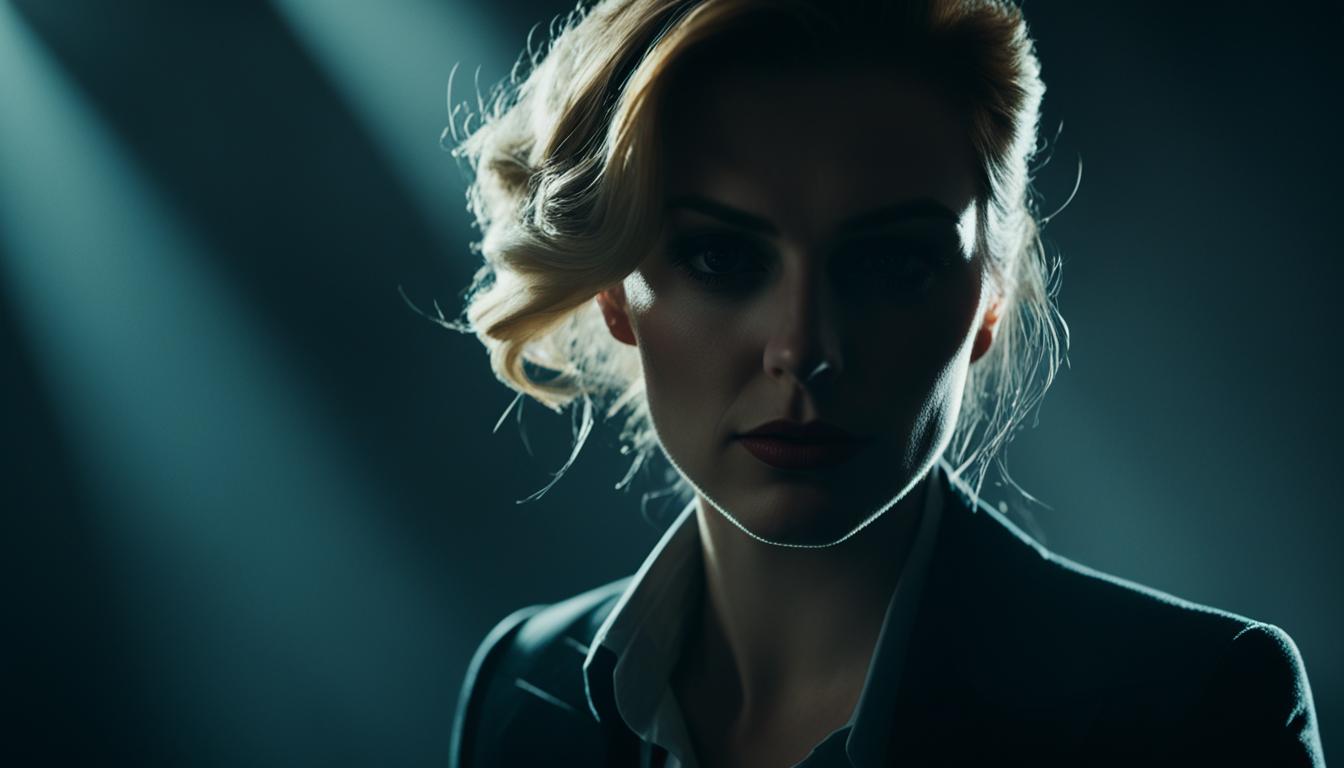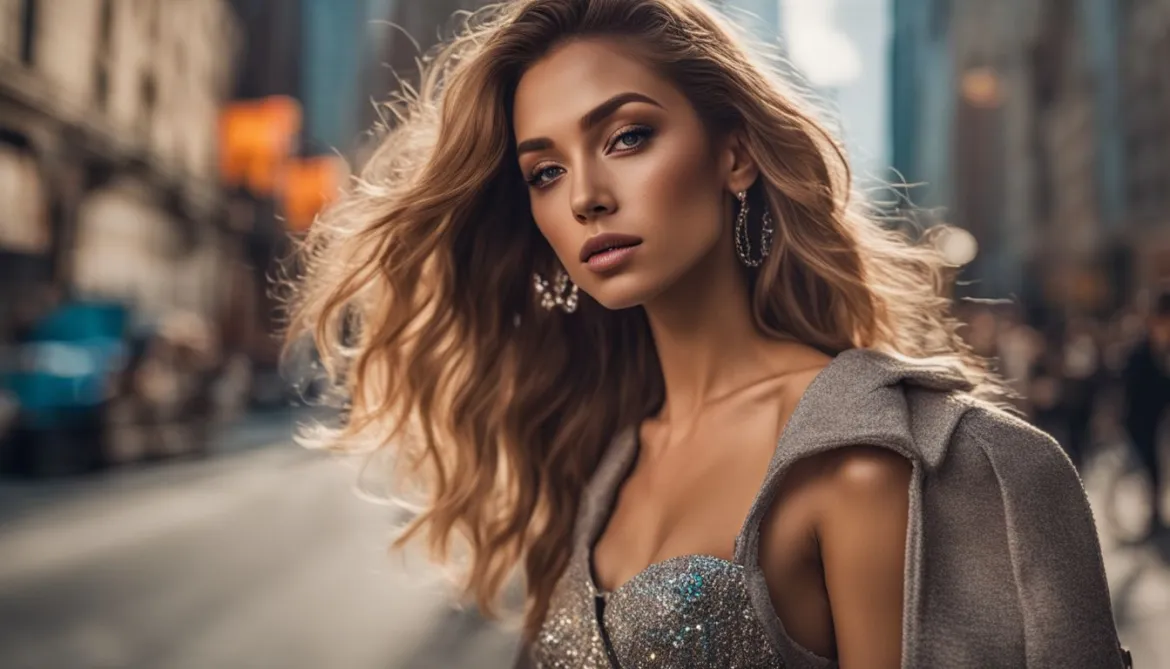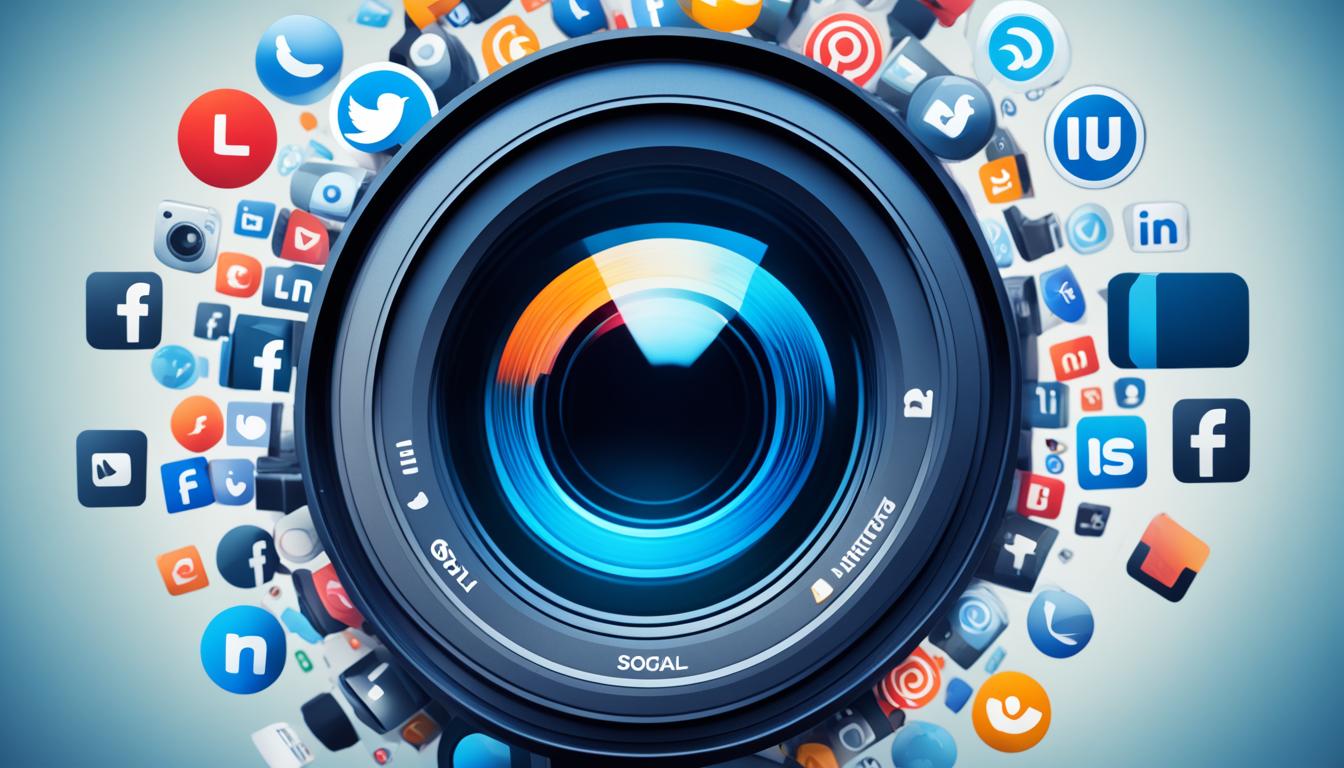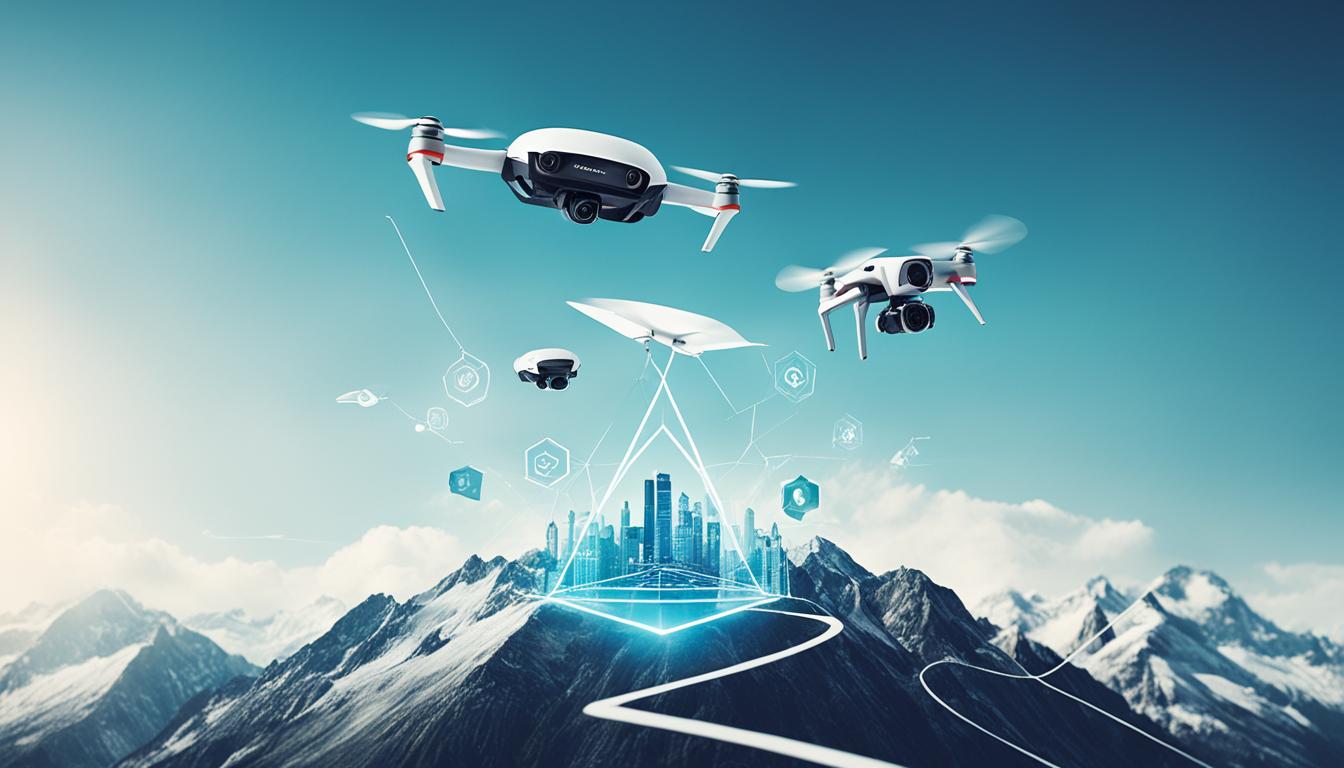Creating stunning editorial portraits requires mastering the art of lighting. The right lighting techniques can enhance details, capture the essence of your subject, and make your portraits visually compelling and engaging.
In this article, we will explore various lighting techniques for editorial portraits, providing you with the knowledge and tips to elevate your photography. From understanding the differences between hard light and soft light to utilizing natural light for outdoor portraiture, we’ll cover it all.
Key Takeaways:
- Editorial portraits require specific lighting techniques to bring out the best in your subjects.
- Understanding the differences between hard light and soft light is essential in achieving the desired effect.
- Using natural light can create stunning outdoor portraits with unique lighting effects.
- Studio lighting offers complete control over the lighting environment, allowing for various effects.
- Applying lighting techniques used in film and video can enhance editorial portraits.
Understanding Hard Light and Soft Light
When it comes to creating captivating editorial portraits, mastering different lighting techniques is essential. Two key techniques that every photographer should understand are hard light and soft light. These techniques have distinct characteristics that can greatly influence the overall look and feel of your portraits.
The Power of Hard Light
Hard light refers to a type of lighting that creates sharp shadows and high contrast. It produces a more dramatic effect, emphasizing the textures and details in your subject. When using hard light, the light source is usually small and direct, resulting in harsh shadows that create depth and dimension.
One popular way to achieve hard light is by using a bare bulb or a focused beam of light from a strobe or flash. This direct light creates strong, defined shadows that can add a sense of drama and intensity to your editorial portraits.
“Hard light is like a spotlight, drawing attention to specific areas and creating bold contrasts. It’s perfect for capturing the raw energy and charisma of the subject.”
The Beauty of Soft Light
Soft light, on the other hand, is characterized by diffused shadows and reduced contrast. It creates a more even and flattering look, minimizing imperfections and creating a sense of softness and elegance in your portraits. Soft light is often associated with a gentle, wrap-around quality that envelops your subject.
To achieve soft light, you can use larger light sources or modifiers that spread the light and create a softer, more diffused effect. This can include using umbrellas, softboxes, or even bouncing the light off a reflector or wall to soften the shadows and create a more flattering appearance.
“Soft light helps create a sense of intimacy and allure. It brings out the beauty of the subject, making them look radiant and captivating.”
Understanding the differences between hard light and soft light allows you to choose the right technique for each editorial portrait. Hard light is ideal for creating bold, dramatic statements, while soft light can add a touch of elegance and beauty to your images.
Using Natural Light for Outdoor Portraiture
When it comes to capturing editorial-style portraits, outdoor portraiture offers unique opportunities to create stunning images. The natural light available in outdoor settings can be harnessed to produce breathtaking effects that enhance the overall composition and storytelling of your photographs.
One of the key factors to consider when working with natural light for editorial portraits is the time of day. Understanding how light behaves at different times can help you achieve the desired look and feel for your images. Let’s explore two distinct lighting scenarios: shooting in the midday sun and shooting during the golden hour.
Shooting in the Midday Sun
Shooting in the midday sun can result in hard light and pronounced shadows, creating a bold and dramatic aesthetic for your editorial portraits. This lighting scenario is ideal for emphasizing texture, creating strong contrasts, and adding a sense of intensity to your images.
When working with harsh sunlight, it’s essential to consider the direction and angle of the light source. Position your subject in a way that utilizes the shadows to add depth and dimension to the composition. Experiment with backlighting or side lighting to enhance the subject’s features and create stimulating visual effects.
Incorporating props or elements from the environment can also amplify the impact of the hard light. The strong shadows cast by the midday sun can interact with surrounding objects, adding visual interest and complexity to your composition.
Shooting During the Golden Hour
The golden hour refers to the period shortly after sunrise or before sunset when the sun is lower in the sky, casting a warm and soft light. This lighting scenario is highly sought after for its flattering qualities and ability to create a radiant and ethereal atmosphere in editorial portraits.
During the golden hour, the light is diffused, resulting in gentle shadows and a soft, even illumination across the scene. This lighting is particularly effective for bringing out the natural beauty of your subjects, smoothing skin tones, and providing a warm glow that adds a touch of magic to your photos.
By positioning your subject in relation to the sun, you can create a variety of captivating effects. Front lighting can produce a soft, romantic look, while sidelighting can add depth and sculpt the subject’s features. Backlighting during the golden hour can create stunning silhouettes and highlight the subject’s hair or clothing.
Summary
When shooting outdoor editorial portraits, leveraging the natural light can result in visually engaging and impactful images. By understanding the characteristics of the light at different times of the day, you can harness the power of hard light and soft light to create stunning effects in your compositions.
Whether you choose to embrace the dramatic shadows and contrast of the midday sun or capture the soft and radiant glow of the golden hour, experimenting with natural light in outdoor settings can elevate your editorial portraits to new heights of creativity and beauty.
Mastering Studio Lighting Techniques
When it comes to editorial portraits, studio photography offers unparalleled control over the lighting environment. With the ability to manipulate various light sources and modifiers, photographers can create a wide range of effects to enhance their subject’s features and set the desired mood.
One key component of studio lighting is the choice between hard light and soft light. A bare strobe or flash can produce hard light, which creates strong contrasts and brings out textures in the subject. This type of lighting is perfect for creating a bold and impactful editorial portrait.
On the other hand, soft light can be achieved by passing the light through a diffuser or bouncing it off a reflector. Soft light creates a gentle and flattering look, smoothing out the subject’s features and adding a touch of elegance to the portrait. It is particularly effective when you’re looking to create a moody and intimate atmosphere.
Take a look at the table below for a quick comparison of the characteristics of hard light and soft light:
| Hard Light | Soft Light |
|---|---|
| Creates strong contrasts | Reduces contrast for a more even look |
| Highlights textures and details | Smooths out the subject’s features |
| Produces a bold and dramatic effect | Adds a touch of elegance and intimacy |
By mastering the art of studio lighting, you can take your editorial portraits to the next level. Experiment with different light sources, modifiers, and techniques to create captivating and visually stunning portraits that capture the essence of your subject.

Continue reading our article to discover more about film and video lighting techniques that can be applied to your editorial portraits.
Film and Video Lighting Techniques
When it comes to achieving professional lighting for portraits, photographers can draw inspiration from film and video lighting techniques. These techniques, commonly used in various genres and styles, can be applied to enhance the visual impact of editorial portraits. Whether you’re aiming for a mysterious and dramatic effect or a flattering and even appearance, understanding how lighting techniques are utilized in film and video can help you achieve the desired results in your editorial portraits.
“Film and video lighting techniques offer valuable insights into creating compelling editorial portraits. By leveraging the lighting techniques used in different genres, photographers can elevate the visual storytelling and emotional impact of their portraits.”
In genres like noir films, hard lighting is often employed to create a sense of mystery and drama. This technique involves using strong, directional light sources that cast distinct and defined shadows, adding a layer of intrigue to the image. On the other hand, soft lighting is frequently utilized in romantic or dramatic scenes to create a more flattering and even appearance. Soft light is characterized by its gentle and diffused quality, which minimizes harsh shadows and produces a more gentle and intimate ambiance.
By studying and analyzing the lighting techniques used in film and video, photographers can gain valuable insights into how to manipulate and control light to achieve specific effects. This knowledge can be applied to editorial portraits, allowing photographers to create images that evoke emotion, captivate viewers, and tell compelling visual stories.
Examples of Film and Video Lighting Techniques in Editorial Portraits
Let’s explore some examples of how film and video lighting techniques can be applied to enhance the quality and impact of editorial portraits:
- High-key lighting: This technique, often used in romantic scenes, involves evenly lighting the subject to create a clean and bright look. It helps to create a soft and dreamy atmosphere, perfect for capturing the delicate beauty of the subject.
- Low-key lighting: This technique, commonly used in film noir, creates a sense of mystery and drama. By strategically placing focused light on specific areas while leaving others in shadow, low-key lighting adds depth and enhances the contrast and texture of the subject.
- Three-point lighting: This technique, commonly used in video production, involves employing three different light sources to create a balanced and well-illuminated image. By using a key light, a fill light, and a backlight, photographers can create dimension, depth, and separation between the subject and the background.
Utilizing film and video lighting techniques in editorial portraits allows photographers to push creative boundaries and deliver captivating images that resonate with viewers. By experimenting with different lighting setups, photographers can evoke specific emotions, enhance the narrative of the image, and highlight the unique personality of the subject.
Benefits of Applying Film and Video Lighting Techniques
Applying film and video lighting techniques to editorial portraits offers several distinct advantages:
- Enhanced storytelling: By utilizing these techniques, photographers can elevate the narrative aspect of their portraits, capturing moments that evoke emotions and engage viewers on a deeper level.
- Creative experimentation: Film and video lighting techniques provide a rich source of inspiration for photographers to explore and push creative boundaries, resulting in visually unique and impactful images.
- Professional quality: Incorporating these techniques into editorial portraits helps photographers create images that exude a polished and professional aesthetic, elevating their work and distinguishing it from the competition.
Understanding how lighting techniques are used in film and video can inspire photographers to experiment, innovate, and create editorial portraits that truly stand out. By embracing these techniques, photographers can infuse their work with a cinematic quality that captivates audiences and leaves a lasting impression.
Choosing Between Hard Light and Soft Light
When it comes to editorial portraits, the choice between using hard light and soft light can greatly influence the final outcome. Understanding the desired effect and the specific context of the portrait is crucial in making the right decision. Let’s explore the characteristics of both lighting techniques and how they can impact your editorial portraits.
| Hard Light | Soft Light |
|---|---|
| Advantages | Advantages |
|
|
| Considerations | Considerations |
|
|
Choosing the right lighting technique should be based on the overall vision you have for the editorial portrait. Consider the context, subject matter, and intended message before deciding between hard light or soft light. Experimentation and practice will also help you discover the best lighting approach for each unique editorial portrait you create.

By understanding the differences and advantages of hard light and soft light, you can elevate the impact of your editorial portraits. Both techniques offer distinct visual effects and can be used creatively to capture the essence of your subjects. Whether you aim for a rugged, textured look or a soft, flattering appearance, your choice of lighting technique plays a vital role in bringing your vision to life.
Elevating Your Photography with Lighting Techniques
Mastering lighting techniques for editorial portraits can elevate the quality and impact of your photography. By understanding the differences between hard light and soft light and knowing when to use each, you can create stunning portraits that capture the essence of your subjects. Whether you are aiming for drama or delicacy, having a strong grasp of portrait lighting techniques will ensure that your subjects are always cast in the best possible light.
When it comes to editorial portrait lighting, there are various techniques you can utilize to enhance your images. Choosing the right lighting setup can make a significant difference in the final result. For example, using soft light can create a flattering and even look, ideal for delicately capturing a subject’s features. On the other hand, hard light can add depth and texture, bringing a sense of drama and intensity to the image.
One way to achieve professional lighting for portraits is by using a lighting modifier, such as a softbox or umbrella, to diffuse and soften the light source. This technique helps to minimize hard shadows and creates a more flattering effect on the subject’s face. Additionally, reflectors can be used to bounce light back onto the subject, filling in shadows and providing an even illumination.
Another technique that can enhance your editorial portraits is the use of rim lighting. This technique involves placing a light behind the subject to create a subtle glow along the edges, separating them from the background and adding depth to the image. Rim lighting adds a touch of elegance and professionalism to your portraits, making them visually engaging and captivating.
Understanding how to manipulate light and create different effects is a valuable skill for any portrait photographer. Whether you’re shooting for a magazine spread or capturing images for a fashion editorial, having a strong command of portrait lighting techniques will give you the creative freedom to bring your vision to life.
Experimenting with lighting techniques
Don’t be afraid to experiment with different lighting techniques to achieve unique and striking results. Every subject and every editorial project is different, so it’s essential to adapt your lighting setup to suit the desired mood and concept.
Consider the use of color gels to add a creative and artistic element to your portraits. Color gels can be placed over your light source to create a warm or cool tone, adding depth and visual interest to your images. This technique can be particularly effective when shooting fashion editorials or conceptual pieces.
Additionally, playing with the positioning of your lights can dramatically change the mood and look of your images. For example, placing a light source below the subject’s face can create a sinister or mysterious effect, while positioning it above can produce a more ethereal and dreamlike atmosphere.
Elevate your editorial portraits by understanding the intricacies of professional lighting techniques. Embrace the versatility and visual impact that different lighting setups can bring to your images. With the right skills and knowledge, you can transform ordinary portraits into captivating works of art.
Conclusion
Mastering the art of creative portrait lighting is essential for capturing captivating editorial portraits. By understanding and utilizing different lighting techniques, such as hard light and soft light, you can elevate your photography and bring your subjects to life in a visually engaging and impactful way.
Whether you’re shooting outdoors or in a studio, the right lighting setup is key to achieving the desired effect. Outdoor portraiture offers the opportunity to harness the natural light available, whether it’s the harsh midday sun for a dramatic look or the soft golden hour light for a radiant glow. In a studio setting, you have complete control over the lighting environment, allowing you to experiment with different light sources and modifiers to create various effects.
Furthermore, drawing inspiration from film and video lighting techniques can also enhance your editorial portraits. Hard lighting can create a mysterious or dramatic effect, while soft lighting is ideal for a more flattering and even appearance.
Ultimately, by continuously honing your skills in creative portrait lighting and mastering different lighting setups, you can create stunning and visually compelling editorial portraits that capture the essence and emotions of your subjects.
FAQ
What are the key lighting techniques used in editorial portraits?
The key lighting techniques used in editorial portraits are hard light and soft light.
What is the difference between hard light and soft light?
Hard light creates sharp shadows and high contrast, while soft light diffuses shadows and reduces contrast.
How can natural light be used for outdoor portraiture?
Outdoor portraiture offers unique opportunities to use natural light, such as shooting in the midday sun for hard light, or during the golden hour for soft lighting.
What are some studio lighting techniques for editorial portraits?
Studio photography allows for complete control over the lighting environment. Techniques include using bare strobes or flashes for hard light, and diffusers or reflectors for soft light.
Can film and video lighting techniques be applied to editorial portraits?
Yes, lighting techniques used in film and video, such as hard lighting for a dramatic effect and soft lighting for a flattering look, can be applied to editorial portraits.
How do I choose between hard light and soft light for my editorial portraits?
The choice between hard light and soft light depends on the desired effect and the specific context of the portrait. Hard light is ideal for a rugged or textured look, while soft light is often chosen for a more flattering and even appearance.
How can mastering lighting techniques elevate my photography?
Mastering lighting techniques can enhance the quality and impact of your photography. It allows you to capture the essence of your subjects and create stunning portraits that are visually engaging and impactful.
What is the significance of lighting in editorial portraits?
Lighting plays a crucial role in creating captivating editorial portraits. It helps capture the visual details and emotions of subjects, bringing them to life in a visually engaging and impactful way.
What Are the Best Lighting Techniques for Global Portrait Photography?
When it comes to global portrait photography techniques, utilizing natural light can provide stunning results. Whether shooting in urban or natural settings, using backlighting or golden hour lighting can enhance the subject’s features and bring warmth to the image. Experimenting with different angles can also create dynamic and captivating portraits.




